Opinion
English Language as it evolves and its pitfalls

Despite living in different counties in England and Wales since 1975 and now completing half a century, I still consider myself to be a student of English. Every time I learn a new word or phrase watching tv programmes including Quizzes, I add it to my collections on Notes on my iPhone. Though had the privilege of being educated in the English medium back home, our pronunciations were typically wayward! Teachers themselves at Royal College couldn’t pronounce words properly! We had the innate difficulty of pronouncing and distinguishing between letter V and W, a bit like the French with letter H and Spanish with letter V – Victor would be pronounced as “Bictor” !
Another problem is trying to translate into English as we speak in our mother tongue – ” I will go and come” ! Or automatically adding “No” after a sentence – “You went there, no “. However, grammar was drummed into our heads by the teachers at school plus in my case, our beloved father who had an excellent command of English language in both spoken and written helping, by encouraging me to write letters and posting them to the home address. He would then sit down with me during weekends to read through and correct where I had gone wrong! Those were the days us having to look up in an omnipresent dictionary at home but, I could never learn how it was pronounced! We are so lucky worldwide now thanks to Google!
Sadly, even the younger generations born and brought up in the U.K. going into university education and even beyond cannot write grammatically correct sentences! Using text languages “u” etc., do not help them either!
Whether other countries like it or not, English is by far the most sought after language in the world ! It’s the gateway to travel round the world – Chinese, Japanese are all keen to learn, providing opportunities for foreigners! So much so that it is no longer the prerogative of PR English – Perceived Pronunciation is the British English accent regarded as the standard one, carrying the highest social prestige, since as late as the very early 20th century. It has also been commonly referred to as the Queen’s English or King’s English.
As well as having the mental aptitude and a desire for the challenge of living and working overseas, to be eligible to become an Interact Assistant Language Teacher you must:
Be a native-level speaker of English
Have received an education conducted in English for at least 12 years
Have at least a bachelor’s degree in any subject from an accredited university
Be a team-player that is professional, flexible, cheerful, and energetic
Be under 60 years of age
While not required, it helps your chances if you:
Hold a driver’s licence
Have teaching experience
Have a teaching qualification, e.g., CELTA, DELTA, and TEFL
Have studied a second language at school or university
Can speak some basic Japanese
Main purpose of submitting this is to encourage my motherland younger generations to take heart, work hard and improve your written and spoken English which is the gateway to travel the world and broaden your horizons!
Sunil Dharmabandhu
Wales, UK
Opinion
Shortage of medicines: Senaka Bibile Policy is the solution
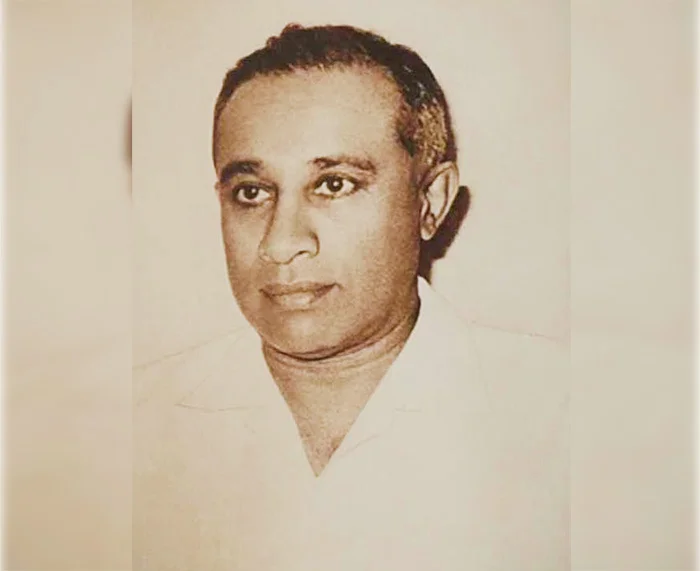
The Senaka Bibile Medicinal Drug Policy is the answer to the present severe shortage of medicines in the government hospitals. As a result, most patients have to purchase their medicines from private pharmacies. The price of these medicines has soared to such an extent that the poor are unable to afford them. This is particularly the case for those with chronic conditions such as diabetes where they need to take medicines daily. This leads to a flaring up of these severe illnesses resulting in premature death. Sri Lanka is going back towards the situation that existed before the 1970s, when Senaka introduced his policy. Then the Drug Companies controlled the global and local markets and the Health Department had to abide by their terms. The majority of the patients suffered as a result.
How did Senaka change that situation through his Policy? He found that various the Drug Companies were purchasing from the few producers of the Generic drugs at a low price and making a huge profit by giving them a brand name and capturing the market. Let me give you an example. The widely used generic product Paracetamol is sold under various Brand names by the different Drug Companies at a huge profit. Senaka set up the State Pharmaceutical Corporation (SPC) with the support of the Finance Minister, Dr N.M Perera, and Minister T. B. Subasinghe. The SPC used the List of Essential Drugs, about 233 (at that time) which had been prepared by Senaka, out of about 1,000 or more available in the market. They obtained the Government health sector requirement from the Medical Supplies Department (MSD). In addition, Senaka made an estimate of the requirement of the Private Health Sector and this was added to the State Sector requirement. Then the SPC called world-wide tenders for the total requirement of essential generic drugs, like paracetamol, for the coming year for Sri Lanka as a whole. Because this was a large amount Senaka was able to get at a very low -price good quality generic medicines for all the people in Sri Lanka. The State Health Sector requirement was given to the MSD. For the Private Sector Senaka set up the Osu Sala at Lipton Circus, Colombo. To reach the people in the rest of the country he chose reliable private pharmacies to whom the Osu Sala out sourced the SPC medicines as its agent. This acted as a pressure on the other private pharmacies to bring down the price of Drug Company products like Panadol, Panadeine etc.
Senaka was keen on developing countries like Sri Lanka not having to depend on imports from abroad and mooted the idea of manufacturing the medicines. For this he set up a State Pharmaceuticals Manufacturing Corporation (SPMC). This was able to produce about 43 drugs due to the efforts of Dr. Gladys Jayawardena, who as DDGLS in the Health Ministry stepped in to carry his work forward. Senaka was also very keen as Professor of Pharmacology to ensure that medical students would practice good medicine when they passed out as doctors. So, he set up a Formulary Committee that produced an excellent Hospitals Formulary as a proper guide in clinical pharmacology. Senaka was an excellent teacher and he never brought any notes into the class room but he was ensuring that the students got his message, by repetition or expanding his message. Senaka shifted to Peradeniya University when it was establishing the Medical Faculty and became the first Professor of Pharmacology. He was an educationist and introduced many new teaching methods.
Senaka was born in remote Bibile. His father was a Rate Mahattaya. He obtained a scholarship to enable him to study at Trinity College, Kandy. Once he became a doctor the first thing, he did was to repay his scholarship so that a poor student could get the chance that he obtained. It was at Trinity that he got interested in social service and upliftment of the poor. He was attracted to the Lanka Sama Samaja Party (LSSP) and its struggle against British Imperialist rule. He joined the LSSP while at University and made an excellent study of Marxism/Leninism. As a medical student I formed a Socialist Society and used to take a group of interested students to his house in Rajagiriya on bicycles. He gave us some good talks on socialism and encouraged us to be critical before accepting his ideas. In the LSSP he took to active politics and became the Treasurer of the Youth Congress. When racial attacks against the LSSP were at its worst during the anti-Tamil Language riots he volunteered to contest a bye-election for the Kuppiawatte Ward in the Colombo Municipal Council. When we went canvassing for him, we were abused as supporters of Tamil also being made an official language with Sinhala. But he did not give in and stood up for the correct policy of the LSSP, knowing that he would lose. My admiration for Senaka soared. But the acceptance by WHO of his Medicinal Drug Policy and sending him to various poor countries to start the process gave him greatest satisfaction. I remember the time when he was to make what turned out to be his final visit abroad to the Caribbean countries and South America. My wife Kamini and I went to his house for dinner with him and his wife Leela. He gave his jovial laugh and said, “Tissa sees how the drug company lobby is trying to frighten me to give up my mission. I have got several calls warning me not to go tomorrow as there is a plot to kill me.” I told him that he should remember that they will not be happy to lose their profits and he should be careful. He left the next day on his mission. It was in Guiana that they killed him by giving him a chemical at a dinner which led to a very rapid heartbeat. With his previous history of ischemic heart disease this could have a fatal outcome. There was some delay in getting him to hospital, and even there he was kept on the trolley for a long time without being seen by a doctor, despite all Leela’s appeals. Kamini and I went to Katunayake to receive Leela with Senaka’s ashes. One of the saddest days in my life. Senaka was only 54 years old when he was killed. He had a lot more energy in him to serve the people and fight for a socialist future for mankind. On this 13th of February we thank him for what he did for the poor people of the world. It will never be forgotten.
Tissa Vitarana
General Secretary of the LSSP
Opinion
Revolutionising Sri Lanka’s rice industry through Value Chain Management
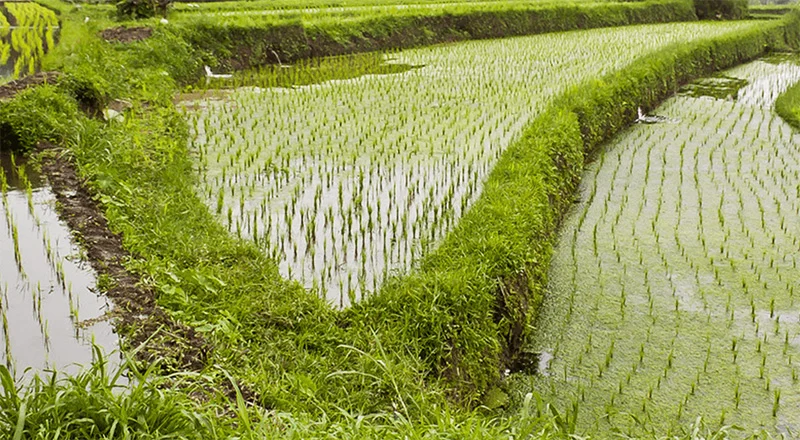
By Lalin I De Silva
This article intends to explore how Value Chain Management (VCM) can optimise cost structures in Sri Lanka’s paddy farming sector; to present innovative rice-based products that can create new markets and improve public health; to analyse global best practices in rice VCM and how Sri Lanka can adapt them and to propose policy measures for utilizing underutilised government warehouses to support rice-based industries.
Rice farming in Sri Lanka has remained stagnant in its methodology for decades. With rising input costs, inefficient farming techniques, and a lack of diversification in rice-based products, farmers struggle to remain profitable while consumers lack access to healthier rice alternatives. The tea industry faces a similar crisis. The government’s role has primarily been reactive, providing subsidies rather than fostering a sustainable model that ensures profitability and nutritional benefits for both growers and consumers.
The adoption of Value Chain Management (VCM) has transformed rice industries in many countries, offering insights into how Sri Lanka can restructure its rice sector. By modernizing supply chains, integrating technology, and promoting value-added rice products, Sri Lanka can transition from a subsidy-dependent rice economy to a self-sustaining and profitable industry.
10 Ways to Reduce Paddy Farming Costs Using Value Chain Management:
Precision Agriculture
: Implement satellite and drone-based monitoring to optimise irrigation and fertilizer use, reducing input costs.
Direct Farmer-Market Linkages
: Establish digital marketplaces for farmers to sell directly to wholesalers, bypassing middlemen.
Mechanisation & Shared Services
: Introduce cooperative-based ownership of harvesting and planting machinery to reduce individual capital costs.
Integrated Pest Management (IPM): Reduce chemical dependency by using biological pest control methods.
Efficient Water Management:

Dr. W. G. Somarathne
Value Chain Consultant
at www.vivonta.lk
Adopt System of Rice Intensification (SRI) methods to cut water usage by 30-50%.
Use of Organic Fertilizers & Biochar:
Reduce reliance on expensive chemical fertilizers by producing compost and biochar.
Cluster Farming:
Group small-scale farmers into cooperatives for bulk buying of inputs and collective bargaining power.
Post-Harvest Loss Reduction:
Invest in proper storage facilities to minimise wastage and maintain grain quality.
Blockchain for Supply Chain Transparency
: Implement blockchain technology to track rice production and prevent price manipulation.
Hybrid Rice Varieties:
Introduce hybrid rice with higher yields and better disease resistance to increase productivity per acre.
10 Innovative Rice-Based Products for Healthier Consumption:
Rice Flour: Alternative to wheat flour, reducing gluten-related health issues.
Rice Noodles: A popular and easily digestible staple in many Asian diets.
Rice Bran Oil: A heart-friendly cooking oil with high antioxidant properties.
Rice-Based Baby Food: Nutritious and easily digestible food for infants.
Rice Milk: A lactose-free, plant-based milk alternative.
Rice Crackers: A low-calorie, high-fibre snack.
Fermented Rice Beverages: Gut-friendly probiotic drinks.
Rice Protein Powder: A plant-based protein supplement for fitness enthusiasts.
Rice Paper Wraps: Used for making healthier wraps and spring rolls.
Puffed Rice Cereals: A fiber-rich breakfast option.
How 10 Countries Have Successfully Used VCM in Rice Farming:
China: Digital platforms connect farmers directly to consumers, eliminating middlemen and ensuring fair pricing.
India: Government-supported Minimum Support Price (MSP) policy guarantees stable income for farmers while promoting organic farming.
Vietnam: Focus on hybrid rice varieties and export-driven policies making it a global rice hub.
Thailand: Investment in premium rice branding (e.g., Jasmine rice) to fetch higher international market prices.
Japan: Uses contract farming models where food companies directly work with farmers to ensure quality and fair compensation.
Philippines: Rice research institutions work closely with farmers to enhance yield through high-tech solutions.
Bangladesh: Encourages farmer-led cooperatives and shared equipment ownership models.
Indonesia: Government-backed storage and logistics networks reduce post-harvest losses.
USA: Heavy investment in genetically modified (GM) rice varieties and precision farming.
Brazil: Integration of rice farming with aquaculture to maximise land use and increase profitability.
Utilising Government Warehouses for New Rice-Based Industries:
The government owns several underutilized warehouses that can be repurposed for rice processing industries.
Installing modern rice milling and packaging facilities will allow farmers to sell polished rice directly.
Warehouses can serve as hubs for producing rice-based products such as rice flour, noodles, and cereals.
Cold storage facilities can preserve rice bran for oil extraction instead of it going to waste.
Collaborative partnerships with private investors can transform these warehouses into rice innovation centers.
How Both Farmers and Consumers Can Benefit from VCM:
Farmers:
Higher income through value-added rice products rather than selling raw paddy.
Reduced dependence on chemical inputs and expensive machinery.
Improved market access through digital platforms.
Consumers:
Access to healthier, diverse rice-based products.
Stable rice prices due to improved supply chain efficiency.
Nutrient-rich rice alternatives that promote better gut health.
Sri Lanka’s rice industry is at a crossroads. By shifting from a conventional production model to an advanced Value Chain Management approach, both farmers and consumers stand to gain. The government must take proactive steps to modernize farming practices, support rice-based industries, and encourage product diversification. Learning from global best practices, Sri Lanka can transform its rice and the Plantation sectors into profitable and sustainable industries, ensuring food security and economic growth.
Opinion
The passing of Sarjana Karunakaran
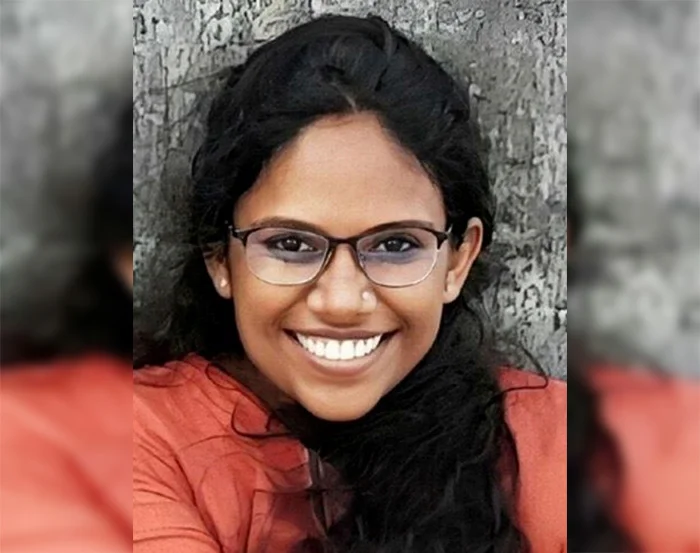
‘Chirp ye squirrels and mourn ye birds, for a spirit ye loved hath bidden good bye’
Passing is something that we all have to reckon with, come early or late. We feel sadder when a person full of smiles and life is taken from us by chance. The beginning of 1990 was a time, with the drum beats of the second round of war, that heralded three births in my family, besides Sarjana they were all three girls, with Thayamani and Thabitha. Times were such that the first time I saw Sarjana and came to know her was during a visit to Jaffna in July 1996. The first impression we had of her can be described as a bubbly presence, full of sunshine and laughter.
When we came to know her intimately was in 2010, as a neighbour, our house, a benefaction of my maternal uncle Gnanar, Sarjana’s grandfather. It is in him that I trace the spirit that moved Sarjana. He was on holiday with us when I was a boy in the same house he later occupied. On a tour of the back garden, he told us of the day he found a baby squirrel fallen down out of its nest and how he climbed the tree and restored the squirrel where it belonged. Sarjana’s window faced us, a symbol of joy and cheer.
In this short presentation, I will draw attention to her chiefly as a scholar. Even in a war-torn society such as ours, ability and scholarship still abound and find their mark. I was more fortunate in my boyhood before the war; the point I make is that scholarship faces several handicaps in a vacuum. Einstein built on his great predecessors, particularly Isaac Newton. When I did my doctorate in Oxford, I was personally fortunate to find inspiration from the work of Ted Slaman from Harvard, who gave me ideas in Mathematical Logic that I followed up.
Likewise, Sarjana who was tipped to do her doctorate in agricultural-biotechnology, related to pest management, during the time the world was under the spell of Covid, which took many promising lives. As was her good nature, she by correspondence helped her cousin Elilini, doing her research at Cambridge, besides others who appealed to her. Elilini has acknowledged Sarjana’s contribution to her doctoral research, which on Sarjana’s sound advice and counsel went fruitfully into allied areas.
Sarjana has left us without revealing the magnificent potential of her life, but gave other youngsters inspiration in fun and scholarship.
Rajan Hoole
Response from Elilini Hoole
Without Chinna (Sarjana) I would not have been able to do my data collection! We also wrote and presented a paper together for a Development Studies Conference in London last year, based on the data we collected. Everyone here (supervisor, colleagues, etc.) commented on how she was able to conduct so many interviews in one month, patiently waiting for a gap in the stringent COVID travel restrictions to interview 50 women. She also managed to do so with such diligence and empathy for the women that, despite the restrictions, she was able to give us rich, detailed insights into a hugely neglected area of understanding. I was really hoping she would come and do a PhD here in Cambridge. She would have loved the programme here, which encourages free curiosity about the world around us.
But she’d no doubt now at her happiest surrounded by God and God’s glorious creatures in heaven. I am looking forward to seeing her again!
-

 News6 days ago
News6 days agoMusk reveals ‘crazy waste’ of USAID funds in Sri Lanka
-
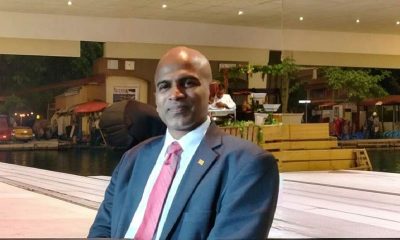
 News4 days ago
News4 days agoSLAS senior to be HC in London, several new dpl appointments
-
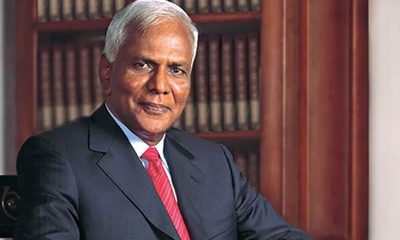
 Features4 days ago
Features4 days agoKen Balendra’s impact on John Keells
-
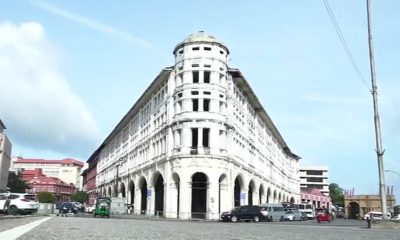
 Life style4 days ago
Life style4 days agoPolished to Perfection
-
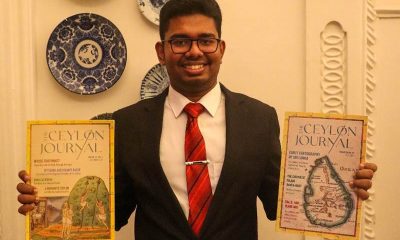
 Features4 days ago
Features4 days agoThe Ceylon Journal’s Second Issue: A Captivating Dive into Sri Lanka’s Rich History and Culture
-

 Editorial4 days ago
Editorial4 days agoCat out of the bag
-

 Editorial2 days ago
Editorial2 days agoNeeded: ‘Ministry of Excuses’
-
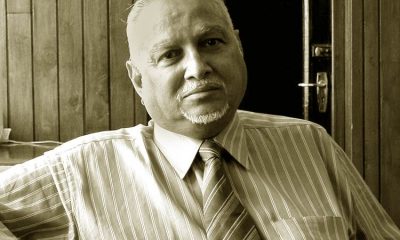
 Opinion4 days ago
Opinion4 days agoThe Birth of the Harry Jayawardena Empire (1977)











